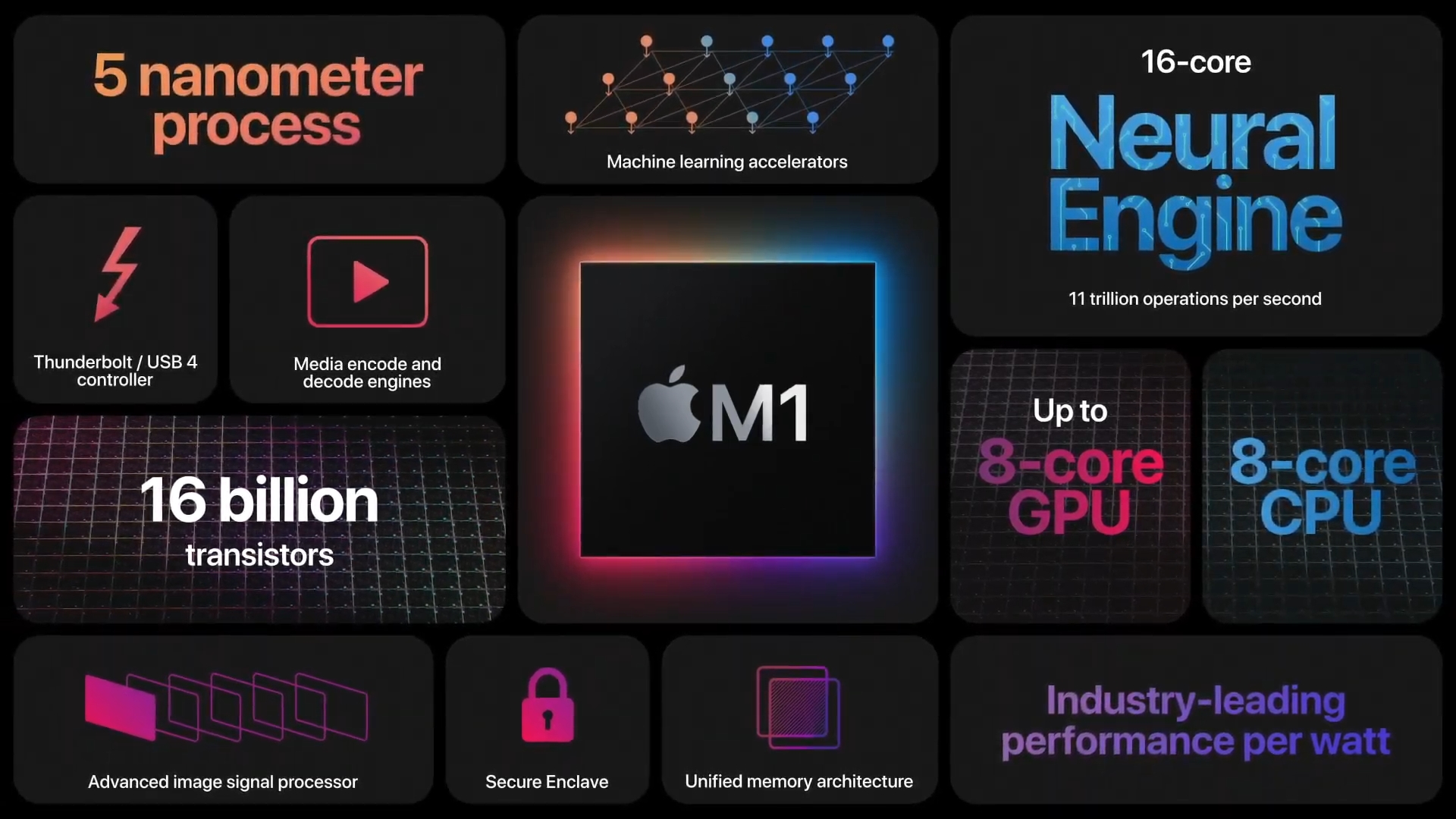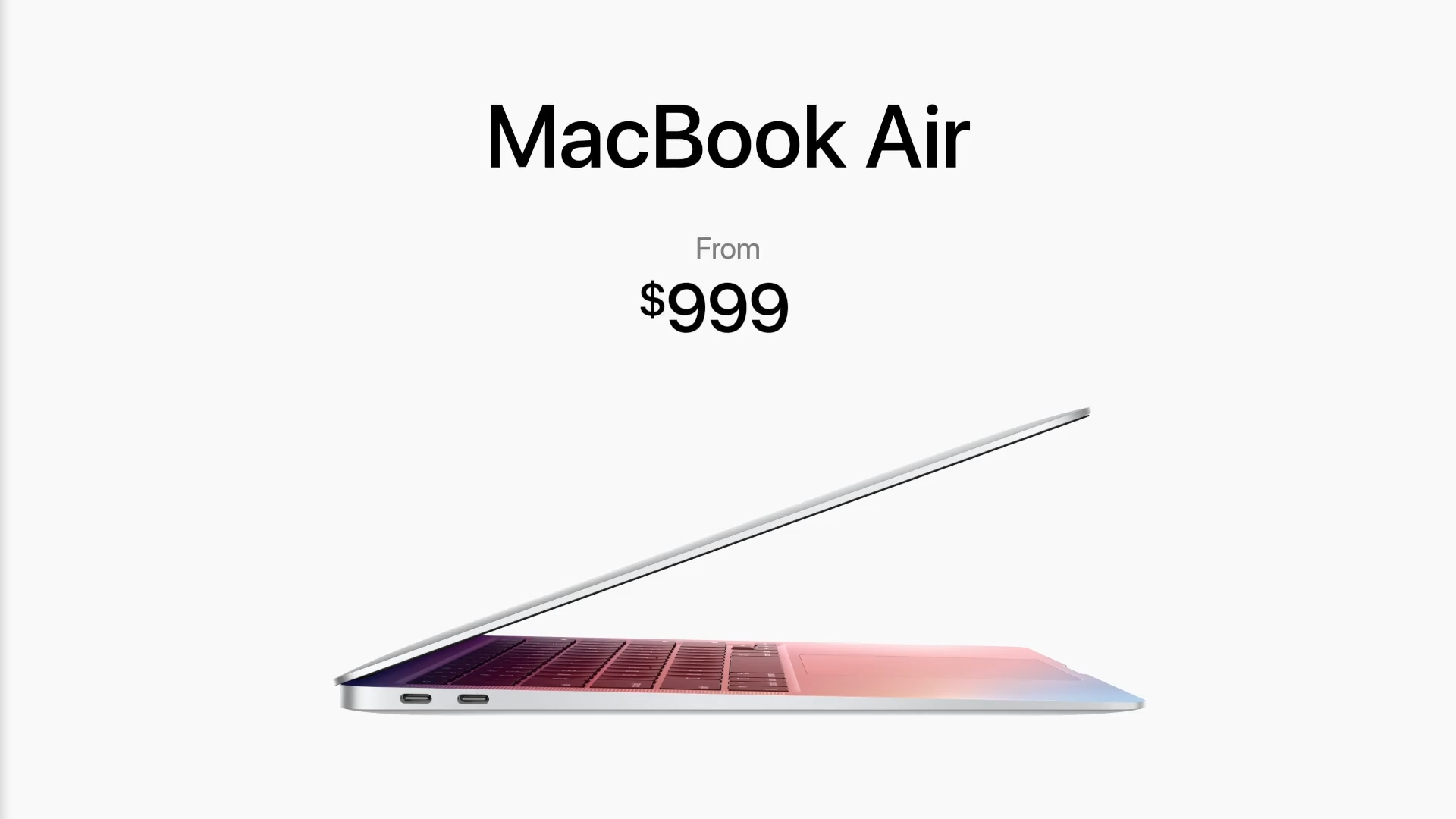Apple M1 chip: performance, specs and release date
Apple has finally announced its custom ARM SoC

Apple's custom silicon has been rumored for years now, but now the Cupertino behemoth has finally given us some actual information about the Apple M1, the SoC behind the move to ARM.
Just like many other ARM chips already on the market, the CPU is a 8-core chip with a BIG.little configuration, with four high-performance cores, and four power-efficient cores. Apple is also including an 8-core GPU in the SoC, which should be more powerful than the Intel Iris graphics found on lower-end MacBooks.
- New MacBook Air: specs, price and availability
- New Mac mini: everything you need to know
- New MacBook Pro 13: specs, price and availability
Apple is making some pretty bold statements about its M1 chip, claiming that it offers up to 3.5x performance over "competing CPUs", though we're not sure what level of performance Apple is aiming at here. Apple has also claimed that the Apple M1 is three times more powerful per watt than the "Latest PC laptop chip", which is also incredibly vague.
What is impressive, however, is that Apple has apparently created its own Thunderbolt controller, which means that even though Apple is tossing out Intel for its entry-level computing products, those products will still have access to Thunderbolt.
Luckily, because preorders for the new MacBook Air, MacBook Pro 13 and Mac mini are available today, it won't be long until we can test Apple's performance claims ourselves.
Cut to the chase
- Apple's custom silicon for MacBooks and Mac mini
- When is it out? New Macs running on the M1 are available to order now

Apple M1 release date
The Apple M1 won't be available on its own, so its availability is ultimately tied to the products it's powering. At its One More Thing event on November 10, Apple announced that all three products powered by the M1 – the New MacBook Air, New MacBook Pro 13 and Mac mini – would all be available for preorder on the same day.
We don't know how long it'll take for any of these products to ship after you've preordered, but you can assume that if you order one today, it'll arrive within a week or so.
Sign up for breaking news, reviews, opinion, top tech deals, and more.

Apple M1 price
Again, the Apple M1 isn't sold on its own, which means that the price entirely depends on the device it's being sold in. However, because the New MacBook Air and New MacBook Pro 13 haven't moved in price, it doesn't seem like the move to in-house silicon is going to save consumers any money.
The cheapest way to get your hands on the Apple M1 is going to be the New Mac Mini, Apple's entry level desktop PC. This will set you back $699 / £699 / AU$1,099 to start, and goes up for there if you add more RAM or SSD storage to the package.
The MacBook Air with the Apple M1 is still $999 / £999 / AU$1,599, and the New MacBook Pro starts at $1,299 / £1,299 / AU$1,999.
One thing to note is that there's only one configuration of the Apple M1 chip. You can't pay to get a more powerful processor, as every configuration of the three computers announced will have the same processor, although the MacBook Pro and Mac mini should still see superior performance, thanks to higher power and more room for cooling.

Apple M1 specs and performance
Apple has made some pretty bold statements about how fast and long-lasting its new SoC is, and on face value it seems incredibly scalable. It can go fanless on the MacBook Air, and scales all the way up to desktop-level performance on the Mac mini. However, Apple only offered very vague comparisons to existing hardware, stating that its new SoC was simply faster than the latest PC laptop chips, without going into any detail about which PC laptop chip it's faster than – there's more than one.
What we do know is that because this is an ARM chip, the Apple M1 is a whole system on a chip, or SoC. What this means is that Apple was able to shove a whole bunch of components into one package, which cuts down on motherboard real estate, and boosts performance by lowering latency and reducing power requirements.
Specifically, the Apple M1 contains the CPU, Cache, Fabric – which we have virtually no information on – a GPU, a Neural Engine and DRAM. Bundling all of these together in one package theoretically means Apple could start producing much thinner MacBooks.
As for the CPU, the Apple M1 has eight cores in a BIG.little configuration – this means there are four high-performance cores and four high-efficiency cores. The high-performance cores are for short bursty workloads that need a lot of single-core and high-frequency oomph, while the high-efficiency cores will take care of a lot of background tasks, leaving the more powerful cores open to take care of more demanding tasks as they arise.
This is a familiar design at this point, similar to that of the Microsoft SQ1 chip found in the Surface Pro X – read our review if you want to know how that turned out.
We're also getting eight GPU cores, with Apple claiming that this integrated GPU is the fastest in its class, offering 2.6 TFLOPs of FP32 throughput.
From the way the chip is laid out, it's safe to assume that the CPU and GPU share cache, which is not ideal, given how little of the stuff is available on the Apple M1. Each block of CPU cores has access to a separate block of 4MB of L2 Cache, with no mention of L3. For comparison's sake, the Intel Tiger Lake flagship, the Core i7-1160G7, has three times that amount, at 12MB, that each core can access.
While Apple's monumental claims of exponentially faster performance and higher efficiency seem super-impressive at face value, they ultimately don't mean much until we know what Apple is actually comparing its new chip against – and it's unlikely we ever will.
Apple's performance comparisons are all against a mysterious "latest PC laptop CPU", the specifics of which the company wouldn't reveal throughout the entire launch event. Likewise, when talking about the Mac mini, likely the most powerful configuration of the Apple M1, we only heard that the comparison was to "the best selling desktop", as the stream flashed the image of a low-end HP desktop PC.
Fortunately, we should be getting Apple's new laptops into our labs soon for a full suite of testing to see exactly what they can do, so we won't have to wait too long to see if Apple's performance claims are accurate.
Keep in mind that it's very possible that this first generation of Apple-built ARM processors for MacBooks will be just like any other first-generation product, with low performance and plenty of bugs to work through. Until we know what these new computers can do, we'd advise not jumping onto Apple's new lineup of processors.

Jackie Thomas is the Hardware and Buying Guides Editor at IGN. Previously, she was TechRadar's US computing editor. She is fat, queer and extremely online. Computers are the devil, but she just happens to be a satanist. If you need to know anything about computing components, PC gaming or the best laptop on the market, don't be afraid to drop her a line on Twitter or through email.